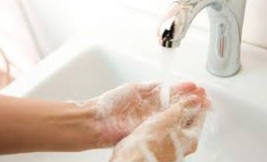
One of the best defenses against infectious disease is one of the most simple ? hand washing.
Still, despite years of global public awareness campaigns, hand washing rates remain low. Caregivers of young children in low-income, developing world settings are found to wash their hands only 17 percent of the time after using the toilet.
A new study finds that video surveillance can provide insights into hand washing behavior. When another person is present, for example, hand washing rates increase 23 percent. These findings could, in turn, inform the design, monitoring and evaluation of hygiene campaigns.
?Hopefully, video surveillance will be added to the toolbox for accurately measuring hand hygiene behavior, thus improving monitoring and evaluation of interventions around the world,? said Amy Pickering, the study?s lead author and a research associate at the Stanford Woods Institute for the Environment.
Co-author Jenna Davis, a senior fellow at Woods, added, ?Hand washing is notoriously difficult to study. Video surveillance looks to be a promising strategy for obtaining reliable information, even in resource-constrained settings.?
The study, published in the journal PLOS One, was carried out using video cameras installed in the washing areas outside latrines of four public schools in the sprawling Kibera slum of Nairobi, Kenya. Parents and administrators gave permission for the study, and teachers were informed in advance.
Pickering acknowledged that the students? awareness of the cameras ? teachers alerted them ? likely affected their behavior. Still, Pickering pointed to the study?s findings as valuable data showing advantages of video surveillance over in-person observation.
Source: healthmedicinet.com
